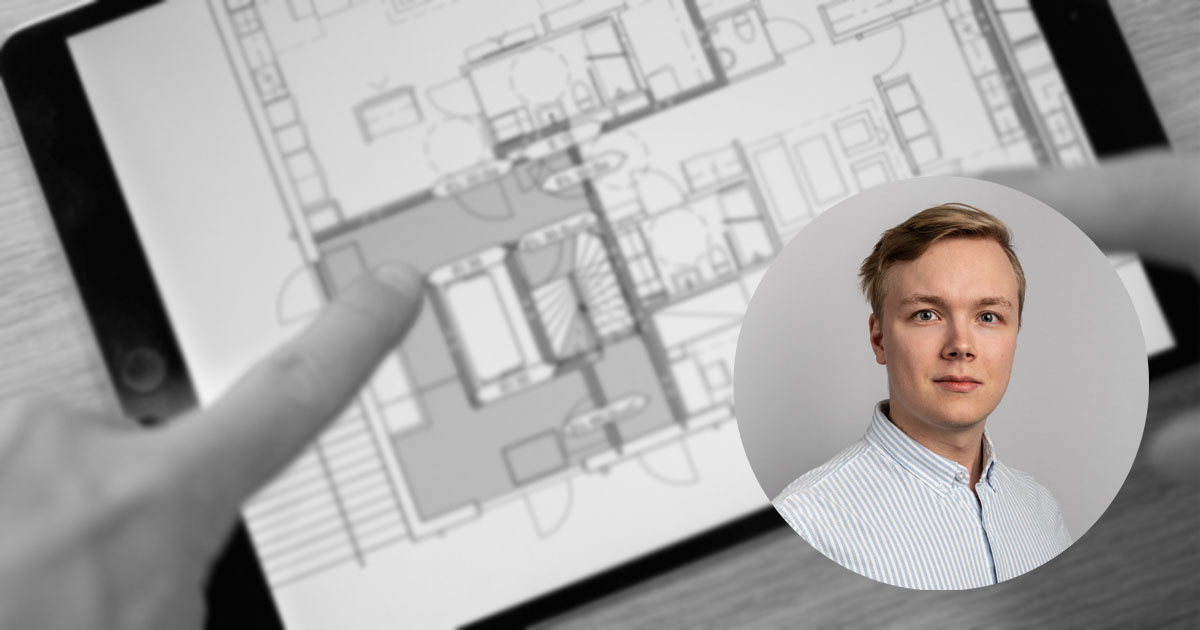We had a minute with Petter Hansson, fire engineering student and consultant at Fire Safety Nordic. Petter has together with the rest of his team worked with BIM and Bimfire Tools and we had a chance to talk to him about their journey and what he believes can be the future of the industry.
You can download the interview in Swedish here.
Tell us a little about yourself:
The reason why I ended up in the fire safety industry is that my father works in the rescue service, as a rescue leader. When the time came for me to start university, he suggested the fire engineer diploma. I applied and got accepted and thought I should give it a try. I’m now in my fifth and final year of my master’s degree in fire engineering. So, I’m still a student but once a week you’ll find me at the FSN office.
When did you become interested in 3D modeling?
We had a course called computer-aided design together with architect- and HVAC students. Everyone would be involved in the 3D modeling, even fire safety. I who have previously worked with 2D drawings could see what a big difference it was and how good an understanding you get of the building when it is modeled. For example, differences in ceiling height. This is almost impossible to see if you don’t have a section image, which I don’t in 2D. During the course, we got to test Bimfire Tools as a way to enter fire data into the model.
Do you see any other benefits with a model-based approach?
Above all, it’s about the understanding, but also that it facilitates coordination. Not everyone may work in the same program, but the models still make it easier for the BIM coordinator in a project. The architect also doesn’t need to spend time adding our information into the model, instead we contribute with our data. Then we know that the information is correct, and we avoid duplication of work.
How did you present 3D modeling at your workplace, FSN?
We usually go to conferences where we get a chance to educate and learn from each other. Last year I had a session about 3D. I had discussed with our boss beforehand about what we were doing in class and we both had concluded that BIM is the future for the industry. During my session, I presented for my colleagues what we worked on and discussed benefits and ideas together. Among other things, the perks of real time updates and how much insight the fire consultant gets. They thought it was interesting and saw the values. I know the big construction companies see the added value with 3D, they get more accurate data, which is not only economically advantageous for the projects but also smart from a climate point of view. My hope is that we will be able to work with BIM in systematic fire protection work, but the industry is not there yet.
In what way do you think the industry can be more at the forefront?
It’s just a matter of keeping your eyes open. If you see anything that you think can work, dare to take the step.
How do you think the educators could be better at challenging themselves?
I would have liked if model design was not only a part of the civil engineer master, but available earlier on in the fire engineering program. Not everyone will become a consultant, but it would be great if you understand that the tool exists. In the future, maybe even the rescue service has 3D drawings, because it creates a lot more understanding of the building. It doesn’t have to be extensive, but perhaps a small introduction. Many students want to work abroad and then BIM becomes even more important. Especially in England with what’s going on with the Building Safety Bill.
How do you think a career for the fire engineer will look like in the future?
Surely there will be a small change. Someone needs to be responsible for the model and there will probably be more such roles, someone might do reviewing work in the final stages without having done the actual model. Coordination roles will also be needed.
Anything you would like to add?
I am in my first deliveries right now, so it is both new for me and new for the customers. But it is very fun and so far, everyone seems to be very happy with the work done.
One last thing I want to highlight is that there is great support on the website. So, you are not alone and if we have a question, we usually get it answered quickly. The webinars have also been very educational, it has given an insight into the whole thing. BIM and different working methods are not something you learn as a fire engineer and then the webinars are very helpful.
Do you want to know more about Fire Safety Nordic? Read more about that they do here!

